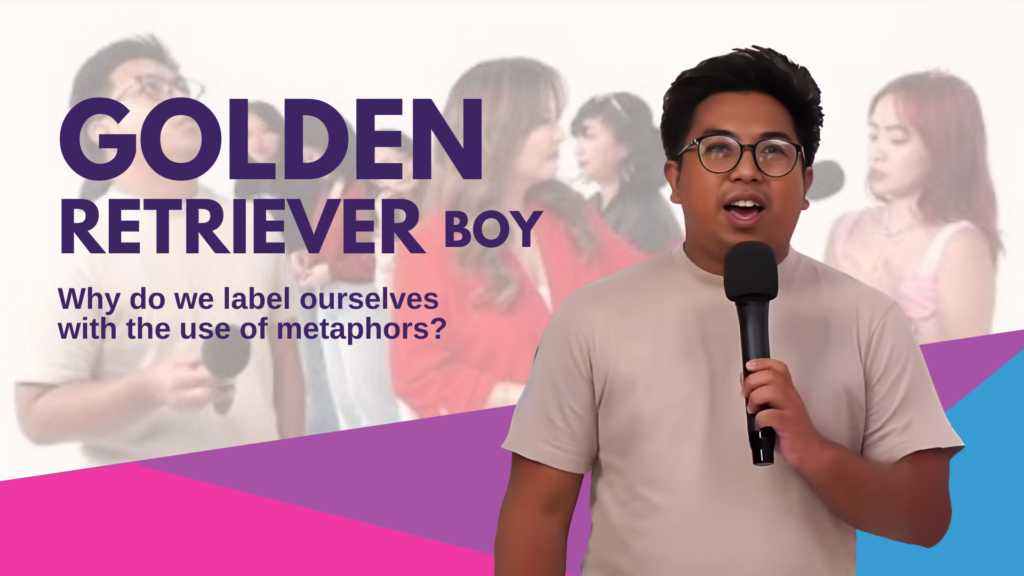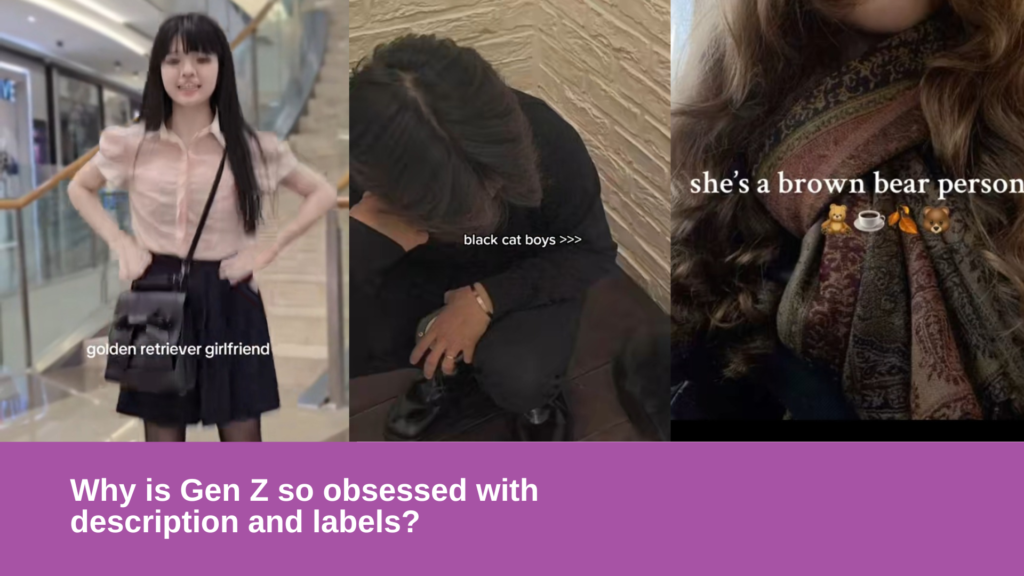Golden Retriever Boy, Do Labels Define You?
Written by Jaztin Suñaz, March 20, 2025
If there was something that could have described you, what would it be? Would it be an animal or an object?

Five months ago, a YouTube video in the Philippines featured a dating game called “Pusuan or Laruan”, a game which was hosted by Marion Aunor that we’ve already featured on our recent blog “Englishera ka rin ba, Halata?”. The game’s concept is simple, participants stand in line holding a balloon, and they pop it if they feel the searcher isn’t a match.
One of the reasons why the YouTube video resurfaced is a 22-year-old Filipino named Josh who we know as “Golden Retriever Boy“. As a searcher, he started with an introduction and described himself as a “Golden Retriever.” It evoked a lot of different reactions not just from the participants but also on different social media platforms, with some feeling off about it and others making fun of it. The said clip was full of negative comments, and most of it came from Filipino netizens.

Courtesy: Marion Aunor (Pusuan or Laruan?)
But what did he mean when he called himself a “Golden Retriever”?
Golden Retriever is a dog breed that is friendly, loyal, and affectionate. By using this metaphor, he expresses his nature in a simple but effective way—warm, reliable, and easy-going.
Why do youth use metaphors to describe themselves?

Courtesy: Umi Chii, EM, shiningjust4u (TikTok Videos)
Metaphors are a powerful way to express ourselves as they are a quick and vivid way to describe traits, emotions, and behaviors. Instead of listing qualities, calling yourself a “Cat” might suggest independence, while a “Bear” could symbolize strength and protectiveness. These comparisons capture personality in a relatable and memorable way.
But metaphors do more than add flair to conversations — they shape how we see ourselves and others. Lakoff and Johnson (1980) argue that they influence our thoughts and perceptions, while Moser (2007) and Schlegel et al. (2012) suggest they can reinforce our identities over time. Whether used playfully or thoughtfully, metaphors help us connect, define who we are, and make sense of the complexities of human personality.

Courtesy: Christian Antolin, Shanz, theschoolofbliss (Tiktok videos)
It’s not just identities that today’s youth love to label — they also put names to behaviors, situations, and trends. Terms like beige flags, main character energy, canon event, girl/boy math, chronically online, and girl dinner have become staples in Gen Z’s everyday vocabulary. Wojdziak (2024) asked the same question that has been constantly sneaking through the cracks and crevices of this article – Is the thought of something simply just existing without any definition scary?
There is this tendency of youth where they take a label and make it their entire personality. In a heavily social media-influenced world, youth are stuck in a landscape filled with niche interests and filtered content. What is posted online and displayed on screens is surface-level material that people devour without much thought due to its convenience. So even when things online can be easily labeled, when taken outside its premise, it is harder to uphold.
As stated by Denecour and Madhav (2024), potentially confining individuals to predefined boxes may not fully encapsulate their multifaceted identities, which in turn can be limiting. “Constant self-labeling is hurting us.”

Courtesy: Marion Aunor (Pusuan or Laruan?)
We often use labels to introduce ourselves in a way that highlights our strengths, presenting an idealized version of our personality. But what happens when reality doesn’t match how we want to be seen? Josh introduced himself as a loyal, friendly, affectionate but sassy “Golden Retriever”. Yet his demeanor shifted after facing multiple rejections.
This raises the question, how do we cope when others do not see us how we want them to? Our self-image clashing with social feedback can lead to discomfort, and throughout the game, Josh displayed involuntary movements like dancing, awkward laughing, and fidgeting. These are all common nonverbal reactions when people feel anxious or awkward. Jaswal (2017) suggests that these movements and mannerisms act as a coping mechanism. In this context, Josh’s behavior reflects a natural response to the discomfort of being in the spotlight.
The struggle to keep an image, the need to cope after failing to keep up an identity he claimed by himself, and failing even the act of saving the said identity, are driven by the desire to compartmentalize the complexity of our personalities.

Courtesy: Pusuan or Laruan Youtube Comment Section
These were some of the negative comments he received from the public after displaying such actions. Are any of us much different from him? People have faces, or self-images of how we want to be perceived. If your image or face is challenged, would you have reacted differently?
Due to the intense need to build a positive face and keep up with the unrealistic standards of today’s world, as well as the thirst for validation that we so easily attain because of social media, youth tend to focus or prioritize creating an identity based on societal preference. Validation drives change and the construction of personality or identity that we put to ourselves.
The trending video of Josh sparks the question, “Wasn’t Josh just doing what most people today do?” He tried to define and label his identity in a brief way. The only difference is, his face was challenged and his attempt to regain it was recorded and posted on the internet. Labels help us to communicate who we are, but they also come with expectations. And when someone doesn’t live up to those expectations, the internet is quick to judge.
Does every reaction hold the same weight? Were the criticisms toward Josh a fair response to his actions, or just a reflection of how easily people latch onto trends and public discourse? Do you also label yourself and try to live up to it? Do you know someone who lives that way?
What Do YOUTH and What Do YOU Think?
References:
Metaphors we live by. (n.d.). Google Books. https://books.google.com.ph/books/about/Metaphors_We_Live_By.html?id=r6nOYYtxzUoC&redir_esc=y
Fqs. (n.d.). View of Metaphor Analysis in Psychology—Method, Theory, and Fields of Application | Forum Qualitative Sozialforschung / Forum: Qualitative Social Research. FQS. https://www.qualitative-research.net/index.php/fqs/article/view/1090/2387
Schlegel, R. J., Hicks, J. A., Arndt, J., & King, L. A. (2009). Thine own self: True self-concept accessibility and meaning in life. Journal of Personality and Social Psychology, 96(2), 473–490. https://doi.org/10.1037/a0014060
Verywell Mind. (2024). How to read mixed signals in body language (and avoid sending them, too). https://www.verywellmind.com/how-to-read-mixed-signals-8719556
Troisi, A. (2020). Hand movements and depression: Insights from ethological analysis of psychotherapy sessions. Journal of Contemporary Psychotherapy, 50(4), 235-245. https://link.springer.com/article/10.1007/s10879-020-09465-5
Denecour, S. (2024, August 5). Op-ed: Constant self-labeling is hurting us – The Huntington News. The Huntington News. https://huntnewsnu.com/79060/editorial/op-ed-constant-self-labeling-is-hurting-us/?utm